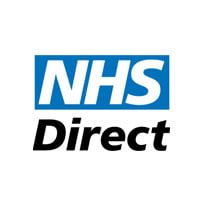NHS Direct gets appy
- 15 March 2011

NHS Direct has announced that it will launch a series of apps for the iPhone, Android and BlackBerry smarthphones over the next month.
Mathew Garrood, associate director, multi-channel for NHS Direct, said the move would advance its stated policy of becoming a “web first organisation”; rather than a telephone service with a website.
The apps will cover a number of topics that will increase over time. “We will deliver a full suite of health and symptom checkers via mobile by April 2011, giving iPhone, Android and BlackBerry users full access to services linked into our current site.
“We’re going to start with symptoms checkers for sexual and mental health, where traditionally patients may feel embarressed about going to see their doctor."
NHS Direct says the number of people accessing its existing site using their mobile devices has grown from 3,000 to 155,000 users in the past year.
Garrood said he envisaged that by the end of 2011-12, more than a quarter of NHS Directs traffic will come from mobile devices, with the majority of that coming from Apple devices and then BlackBerry smartphones.
EHealth Insider asked Garrood whether the advice and information service was focusing too much on smartphone users, when they represent only a very small part of the population.
In response, Garrrod pointed out that smartphone use was spreading, particularly among some sections of the population. He also denied that the shift towards mobile would increase costs for users.
“Based on the number of usages per month visiting the site from a mobile cost less than 10p per transaction at the moment.
“NHS Direct is not saving money by doing this, but we are in wider health economy by helping to avoid expensive 999 calls and emergency admissions.”
He added that NHS Direct is making use of other social media, including Twitter, on which it has more than 7,500 followers, and Habbo Hotel, which has provided information on the HPV vaccine to teenagers.
Garrood added: “We’re also one of the first trusts to live stream our board meetings and we have hundreds of people viewing those.
"Before, we would have a few staff and maybe one supplier who attended. Now we have more staff, lots of suppliers and even some members of the public keeping check.”




